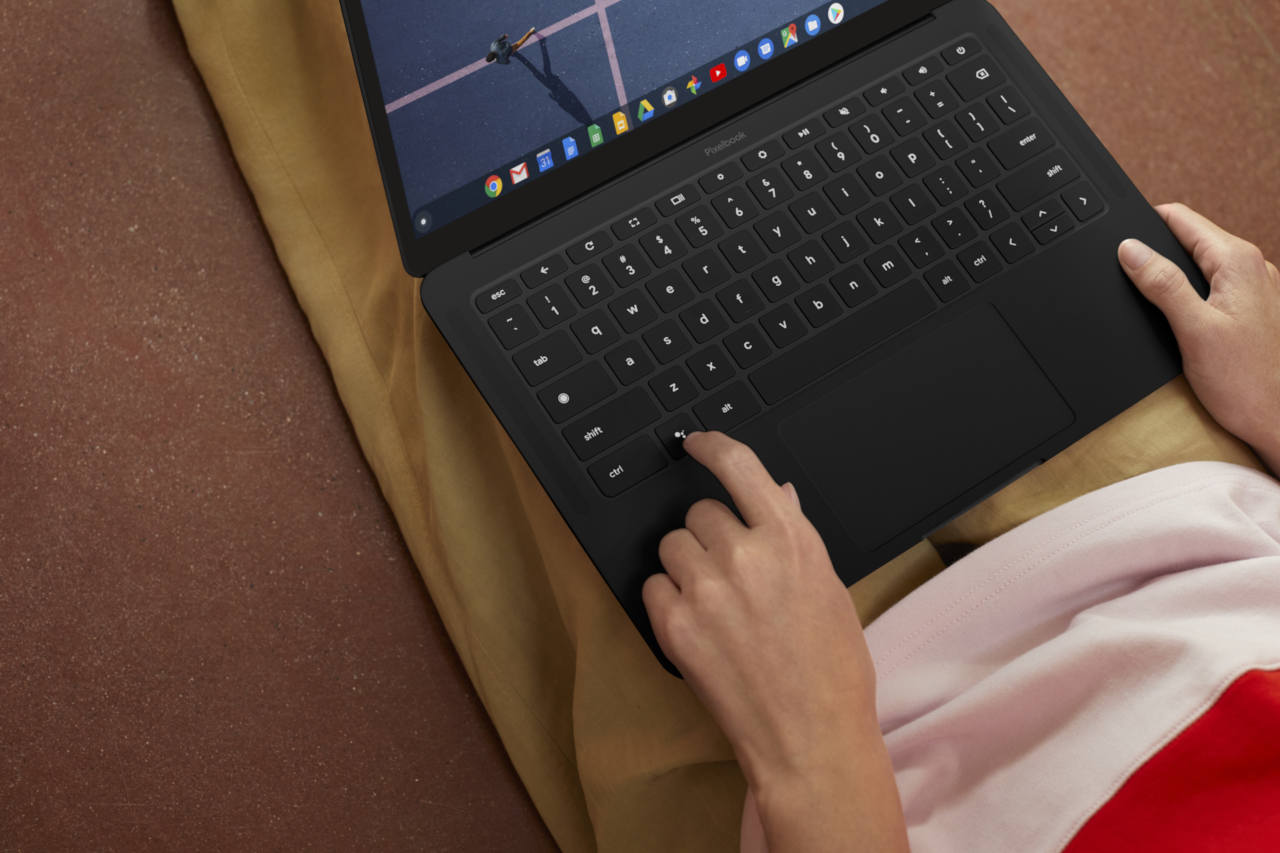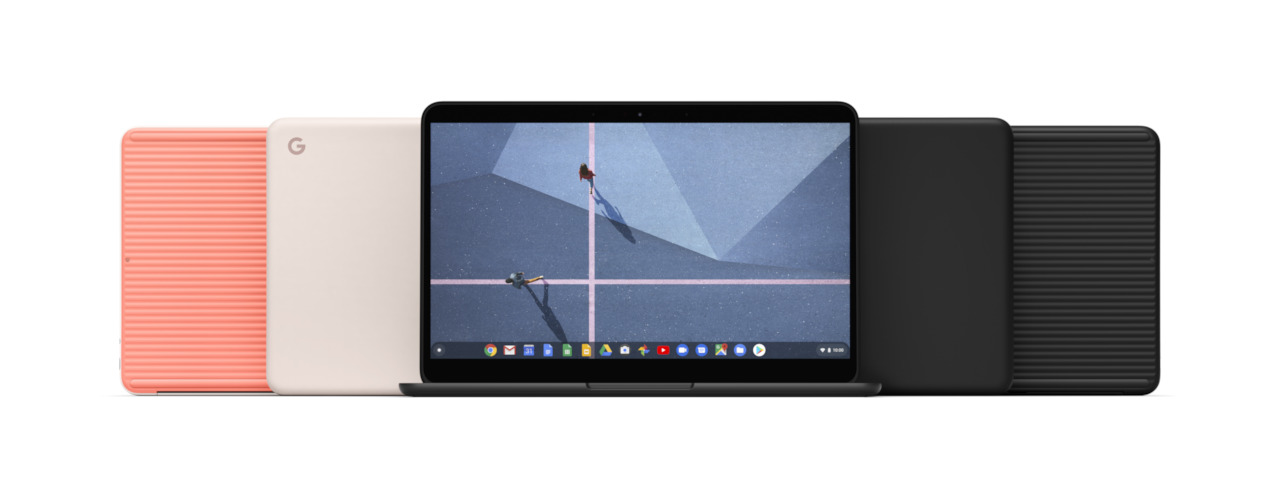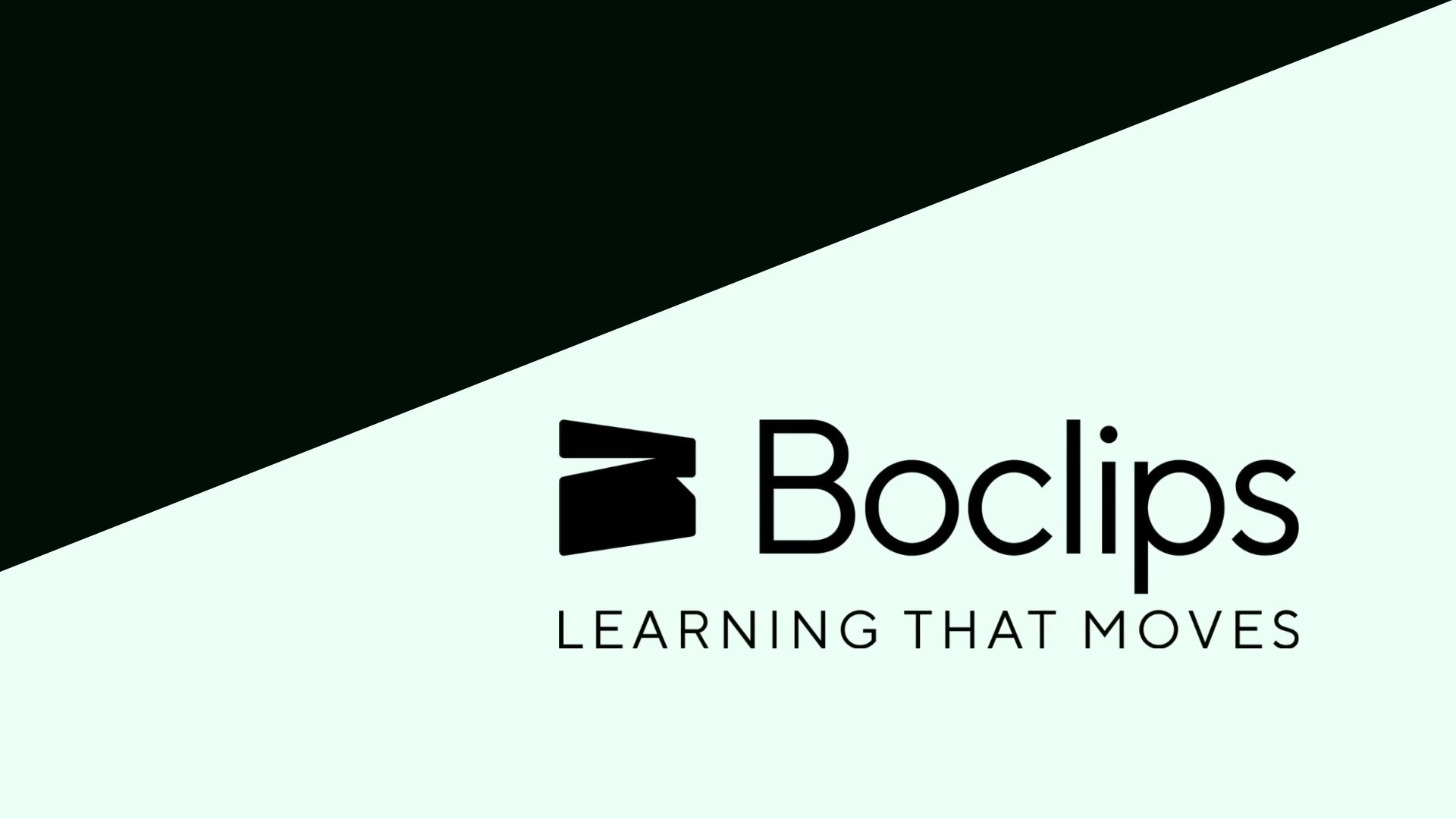Google Pixelbook Go: Review for Schools
A Chromebook that checks all the boxes, except one: price.

In this age of education from home, having the right equipment can be the difference between teaching and missing a teaching moment. Google’s Pixelbook Go is a masterful piece of design, engineering and manufacturing that can be a self-contained remote teaching machine, but its price makes it a hard sell.
At 0.5- by 8.1- by 12.2-inches and 2.3-pounds, the Go is a Chromebook that’s small but not underpowered. Even with its small AC adapter, it still has a travel weight of 2.7-pounds. That’s not only a lot smaller than Dell’s Chromebook 3100 but more than half a pound lighter than HP’s Chromebook X2. Its rugged magnesium alloy case feels good in the hand and its ribbed back makes it easier to grasp and harder to drop.

Available in matte Just Black and Not Pink (an attractive shade of peach), the Go feels solid, well-made and fits nicely on a desk for video lessons or conferencing with a class, other teachers or parents. The 13.3-inch display is big enough to use without an external monitor and is not only touch sensitive but is made of super-tough Corning Concore glass.
If you want an active stylus, the Pixelbook Pen costs $99, adds pressure sensitivity and is available in silver or black. It requires a AAAA battery but there’s no place on the Go system to stash it.
HD OR HIGHER RESOLUTION

For students and teachers used to Wide-XGA resolution, the display’s full HD resolution of 1920 by 1080 will be an eye-opener with detailed images just-about jumping off the screen. The screen looks great, is bright and vibrant but its hinge swings back to only about 135-degrees. In other words, the display doesn’t fold flat or fully over to create a tablet, as the Dell Chromebook 3100 can.
Inside, the Go has a fully up-to-date Chrome computer that not only updates itself, but has a Titan C chip to encrypt data, it’s on a par with a PC’s Trusted Platform Module (TPM) and Apple’s T2 chip. In other words, the Pixelbook Go will fit right into the IT landscape of just about any school and be secure enough for those teaching from home.
The $850 Go I looked at came with some of the best components available, including a Core i5 8200Y low-voltage processor that runs at between 1.3- and 3.9GHz. There’s also 8GB of RAM and 128GB of storage space. If that’s too expensive, teachers and schools can get the $650 base system with an Intel M3 processor, 8GB of RAM and 64GB of storage. There’s also a $1,400 flagship system with a Core i7 processor, 16GB of RAM and a whopping 256GB of storage that carries a Ultra High Definition screen capable of 3840 by 2160 resolution.
USB C HUB REQUIRED
With two USB C ports and a headphone jack, the port selection is skimpy but adequate. The first thing you’ll need to do is get a USB C hub that includes connections for sending video to a projector or big screen, old-school USB 3.1 and wired LAN ports. Still, the Go has the one-two connection punch of 802.11ac Wi-Fi and Bluetooth 4.2, which worked well with my wireless LAN as well as keyboards, mice and external speakers.
The system’s keyboard has comfortable 19mm keys and is one of quietest on a notebook that I’ve seen (or heard), a big benefit when the clackity-clack of typing comes through on a video link. It also has backlighting for teaching by the light of a projector and a huge 5.2-inch touchpad.
Audio is covered by a pair of built-in speakers that can get surprisingly loud and a pair of microphones at the top of the screen that use active noise reduction making it good for a parental video conference in a library or remote teaching with the dog barking in the background.
The Web cam sits at the top so it has a good view of your face. Its angle can be adjusted by tilting the screen and it can show up to HD resolution at 60 frames per second. The camera, however, lacks a privacy cover.

PERFORMANCE POWERHOUSE
All this adds up to a top-flight system that should blow away most of the other computers at school. It scored 777 and 1,387 on GeekBench 5’s single- and multi-processor suite of tests and 29,498 on the Octane measure of computing. This is roughly twice the performance potential of HP’s Chromebook X2.
With all that power on tap, the Pixelbook Go’s 47 watt-hour battery pack powered the system for 13 hours and 10 minutes of viewing a variety of YouTube videos. That’s nearly an hour longer than the runtime of the HP Chromebook X2 was capable of. If you’re in a power pinch, the Go’s battery can grab two hours’ worth of charge in just 20 minutes between classes.
With a one-year warranty, the mid-range $850 Pixelbook Go that I looked at might be eclipsed in education by the $650 M3-based system. Still, if you crave one of the best conceived, built and outfitted Chromebooks available, look no further than any of the Pixelbook Go models. They’re ready for anything teachers, students and the needs of remote learning can throw at it.
Google Pixelbook Go
Reasons to buy
Reasons to avoid
Tools and ideas to transform education. Sign up below.

